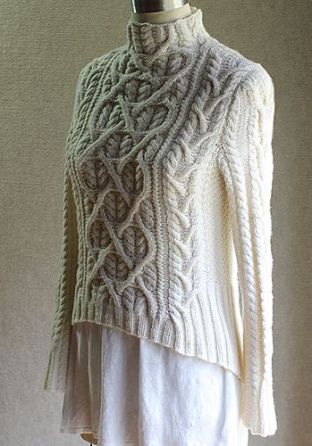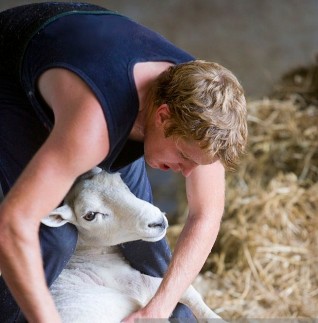Mary might have had a little lamb, but perhaps its fleece was not quite as white as snow. The fuzz of a lamb’s coat can sometimes be a bit like Velcro, that fabulous invention to which anything fluffy will stick. The more bits of grass, hair and goodness-knows-what else gets embedded into the Velcro, the less its counterpart wants to stick, almost as if to say, “thank you very much, my appetite for sticky things is satisfied and I am full – I can’t stick to another thing.” (And just there your swimming trunks let you do wn by popping open after a particularly energetic lunge in a game of beach Volley Ball.) That’s Velcro for you. Lamb’s fleece has a great capacity for harbouring infinite bits and pieces that are usually displayed on a Grade 2 classroom’s Nature Table.
wn by popping open after a particularly energetic lunge in a game of beach Volley Ball.) That’s Velcro for you. Lamb’s fleece has a great capacity for harbouring infinite bits and pieces that are usually displayed on a Grade 2 classroom’s Nature Table.
Forgive me for exaggerating. By now you must be picturing a small creature resembling a roaming long-legged hedgehog, coated in leaf litter and garden waste. That is not true. Lambs have little fleecy pelts ranging from tight curls resembling “French Knots” (in embroidery terms) to soft fuzz. Some have mini dreadlocks. Some have silky hair. It all depends on who their parents are. But nevertheless Mary’s lamb was probably adored and spoiled, since it followed her around. And if it was white as snow, it was probably from being bathed and brushed! Which is what you would normally do with fleece before you can make yarn.

Woollen yarn is an ancient material, used for a few thousand years already to make garments and useful items like bags, blankets and carpets. The coats from sheep, camels, alpacas, goats and rabbits are the most usual sources. Quite long ago my sister farmed with Angora rabbits – their fur is incredibly soft and warm. Whenever she harvested their fur and it happened to not be summer, she dressed them in little jumpers to keep them warm until they had enough fur of their own again. Imagine a whole hillside of sheep ambling about in Aran sweaters!


But the beauty of natural fibre is that it is sustainable, very hard wearing, very warm and very good for the planet. When I had an orphaned kitten that needed to be kept warm, it thrived in a bed of sheep’s wool; synthetic polar fleece would not have done the trick! Knitting is such a useful thing, too – it lends itself to creating beautiful things that, if protected from moths, can live for hundreds of years. And no matter how well or badly you knit, it does have something very soothing about it. I am not a good knitter, but my mother was. She could knit, read a book and listen to the radio all at the same time.
This takes me back………
It is early morning in mid-September. I have just woken and before my eyes have focused on anything, I have remembered that it is holidays. What a cracker to get me out of bed in one leap! September is Springtime, on my side of the world. And yes, I can smell them…..I can hear them too, the baa-ing of sheep and the distant heady aroma of lanolin and manure. A quick check outside to see whether the sun is shining (yes) and on with a sleeveless cotton dress, then off to the kitchen for a bowl of porridge, a dash of toothpaste and some wild brushing, a cursory jab of a comb through the hair and out the door, down to the pens.
Half skipping, half jogging, I am already almost there when I realise by the goose bumps on my arms that the cotton dress was perhaps a bit optimistic. It is sunny, but not yet summer. Oh but I can’t help loving September! It is the time of year when you get dizzy with smells (others with hay fever) and the sun gets itself out of bed earlier and makes you feel full of energy, forgetting that winter has not entirely given up its grip.

The make-shift holding pens outside the old barn are teeming with sheep, pushing against each other and going round and round. There is a pen with shaggy animals waiting to be shorn, another with animals denuded of fleece and looking amazingly like oranges with the pith and not the skin. Each of these bears a stamp with the shearer’s initials, almost like a brand but instead of being burnt into the shorn hide, the letter has been dipped into black oil and so made its mark. This, I think, is to see who the good shearers are and who the culprits, for some savage nicks into flesh.

Quickly my bare feet climb up the rails, slippery and smooth from years of use, over the top and down to the ground with a light plop. Carefully skirting the puddles and droppings in the dirt I trot around to the big barn doors, open in the morning sun. The din inside is at a steady pitch, folding around me like a heavy blanket and over and above everything else, is the loud humming of the motors of the shearing machines. Strange contraptions that they are, with flying wheels and cords and cables, I know to keep well clear of them. I am heading for the bins. These are the cages where the various grades of fleece get thrown.

The sheepy smell of lanolin might not be everyone’s cup of tea – I know it wasn’t my mother’s when she was pregnant with us – but to me, it is part and parcel of my Spring holidays. And so is the soft, springy bed of sheep’s wool and its wonderful combination of cushiness, oiliness and sharp pricks of things that are stuck in the wool. And when the “sorter” comes and throws another pelt into the bins, I thrash my arms a bit to unbury myself. It doesn’t take very long for me to grow bored of my bed in the bin and when I haul myself out of the wool, there is a rush of cool Spring air onto my warmed, oily skin.
From there I pass the sorting table, pausing long enough to watch as another shorn pelt gets flung onto the wooden slats, still resembling the shape of an animal skin although sort of torn apart like a shaggy cloud. The “sorter” quickly picks off the skirt part of the fleece – this is the really dirty (Velcro) wool along the edge which cannot be used – and then separates the pelt into different grades according to length of fibre and cleanliness.


It is fascinating to see how quickly he works. The sorted wool from the bins goes into a huge square nylon bag hooked inside a wooden press frame. When the press cannot push any more wool into the bag, the bag is closed, using metal hooks. These are quite vicious and scary, if you have a lively imagination.

But my destination is the stack of bales, stuffed so full of wool that the sides of the bags are bulging and slippery. As I write this, the palms of my hands are perspiring with the memory of that feeling of almost slipping off as I climb up to the top, which is quite close to the barn roof.
Up here, I have a good view over the whole shearing operation. The sheep being shorn sometimes resemble ladies calmly having a pedicure, as they sort of recline on their backsides with their feet lamely dangling in the air. Of course they aren’t and ladies having a pedicure would not be clamped between somebody’s knees.


But sheep are reasonably docile animals, and once persuaded as to what they must do, seem quite content to comply. It is fun to see how, once they realise they are free after all their fleece has been shorn off, they suddenly spring to life and shoot out the doors into the sunlight.
Our sheep are Corriedale, with a dense, springy sort of wool.

They are also favoured for their meat unlike the popular Merino which is bred specifically for wool. In fact, in the years of my childhood, Merino sheep were known for their many folds, almost like a Sharpei dog. With so much excess skin, you can imagine, comes an extra amount of wool. Almost like those specials you see in supermarkets: “extra 25% FREE!”
I heard a story of a fellow who was shearing a Merino sheep in the Eastern Cape years ago, when all of a sudden he and his neighbour dropped their clippers and bolted straight out the door. The bewildered, abandoned sheep ran after them, with her half-shorn pelt trailing along like a cape. While opening up the folds around her neck to shear off the wool, the shearer had disturbed a Cobra who had been comfortably ensconced and fast asleep!


A fabulously woolly tale if ever I heard one.

Jeanne, so beautiful, evocative and well written, a woman of so many talents well used. xxx
LikeLiked by 1 person
So refreshing to read. With the shearing, came the smell of ‘sierings’ and the search for ‘knikkels’ in front of the shearing shed. And then what about all the daisies in the vlei.
LikeLiked by 1 person
Oh yes! And what about the stinging nettles….”brandsiekels”…!
LikeLike
In my day it was hessian bags suspended from the barn rafters by thick brown leather thongs. There were always 4 square bags, the one nearest the barn doors was the grade one wool taken from the centre of the fleece carpet. It was so soft and creamy from the lanolin coating. A full bag was taken down and closed using a large curved and very sharp needle and special thick waxed thread. The bag was then stamped with Pappa’s code and stacked at the back of the shed. I loved the swinging motion of the hessian bags suspended from the rafters. Mommy told me that Pappa often had to lift me out of the bag. I had fallen asleep with the gentle motion. I loved going with Pappa to the wool depot in Paardeneiland. The bags were off-loaded and weighed. A skewer was stabbed into the bags to withdraw a sample of wool..I have many more wool memories. I loved your story.
LikeLike
My first country teaching stint was in Hopetoun, a small town in Victoria. It was sheep and wheat country and I saw firsthand the long hours, both when it was shearing time and harvesting. For a girl who had spent all her life up until that point in relatively big cities, it was a wonderful introduction to farming life.
LikeLiked by 1 person
Favourite times on the calendar for me as a child..harvesting and shearing.
LikeLike